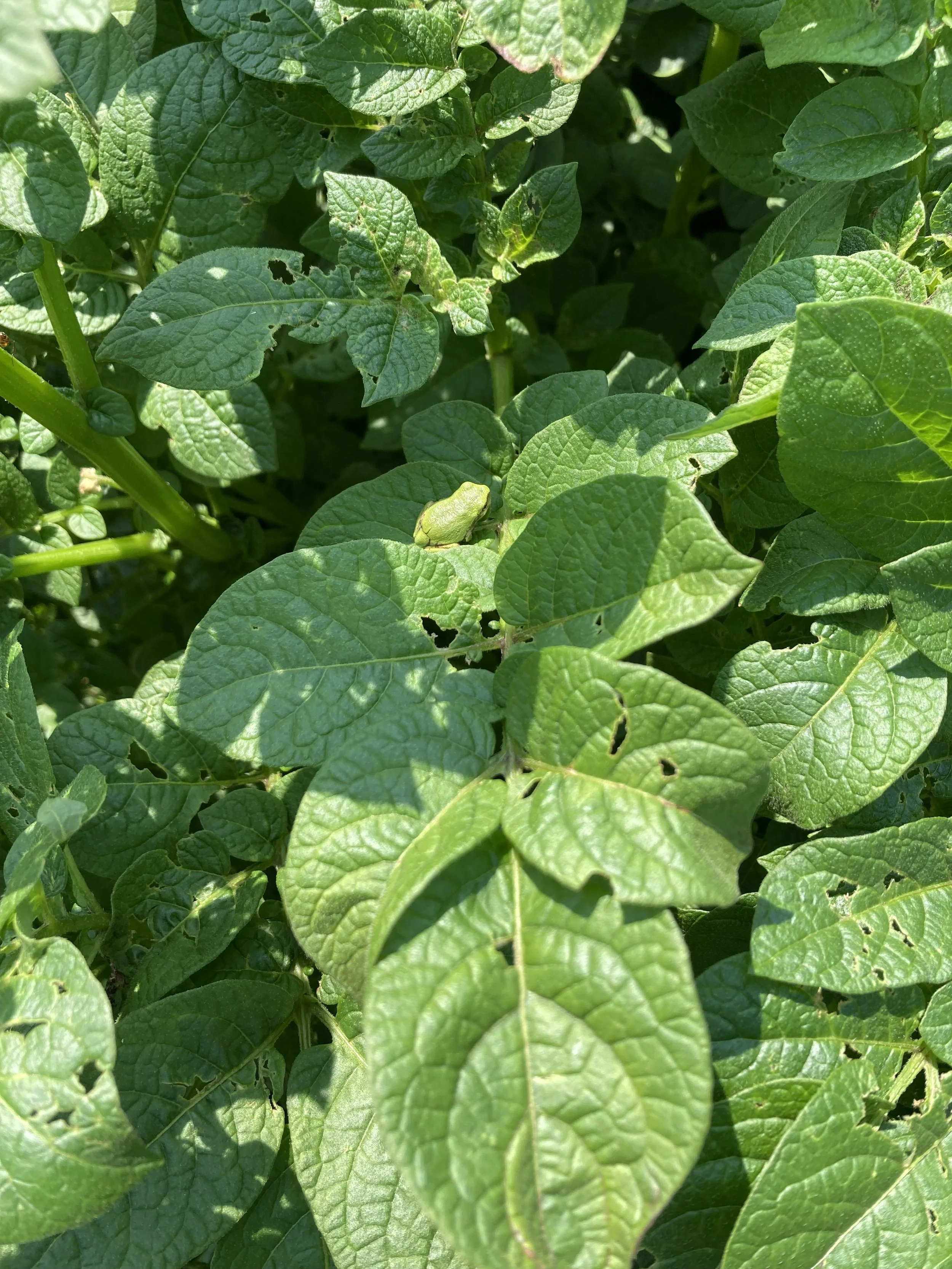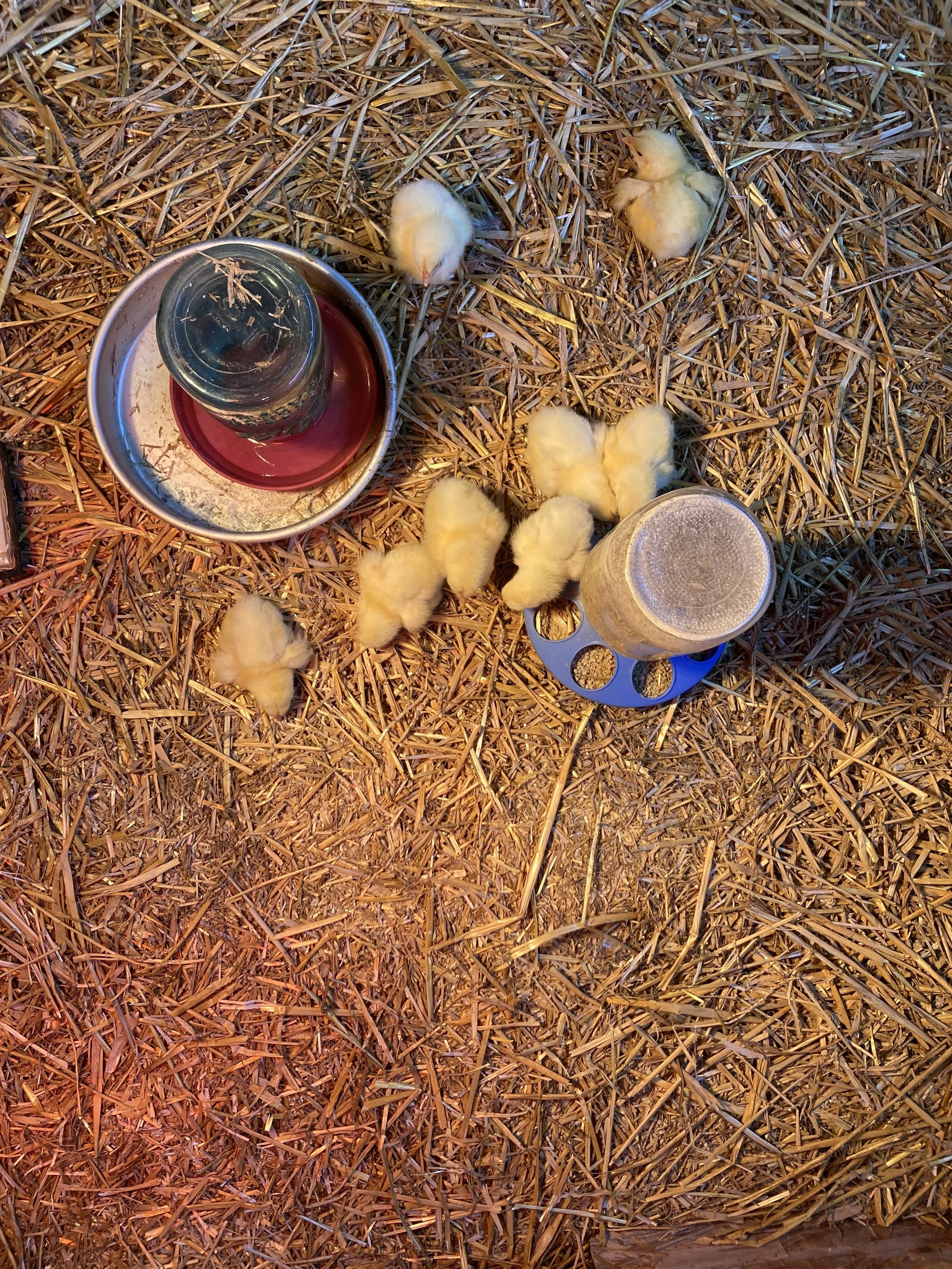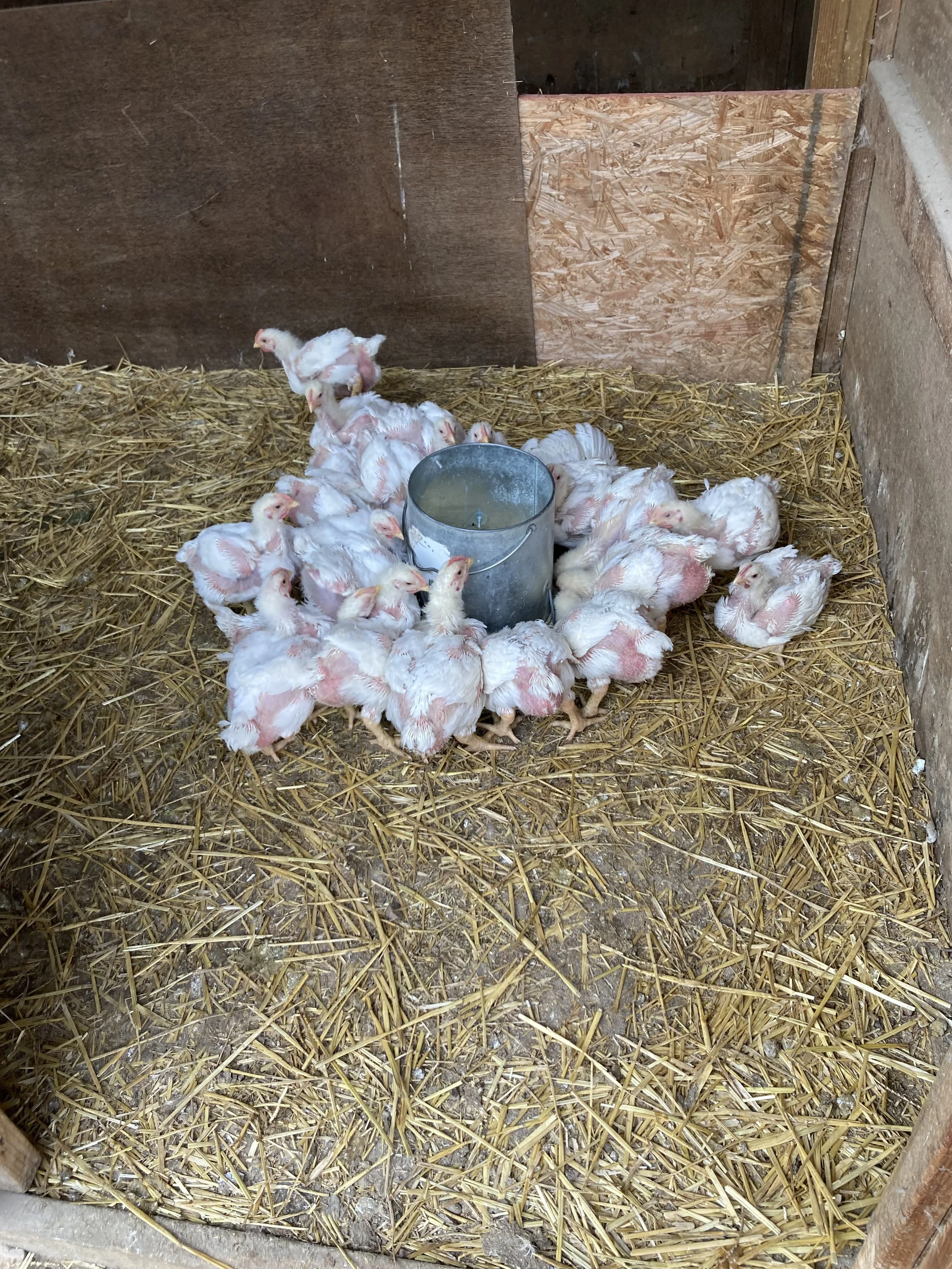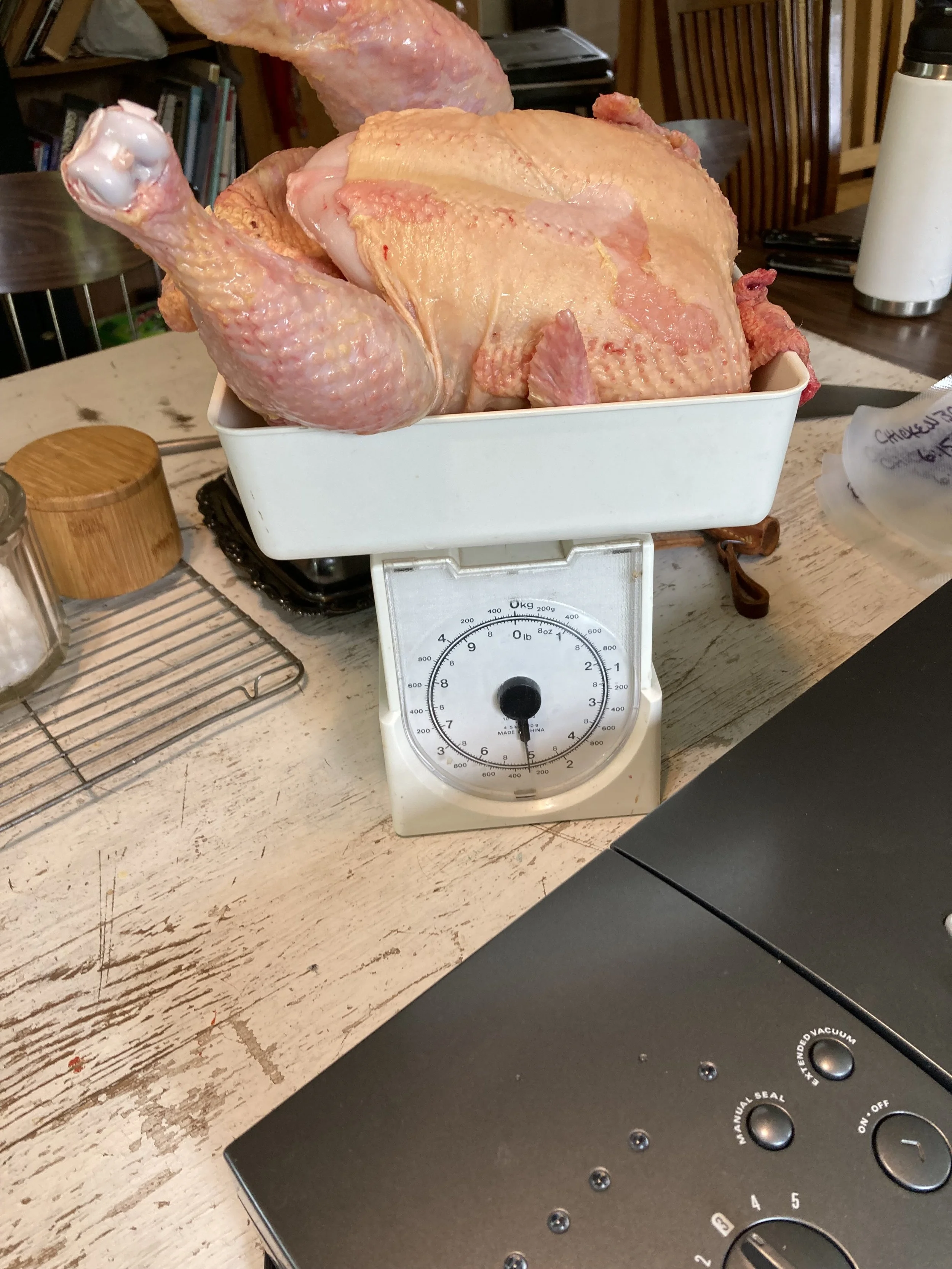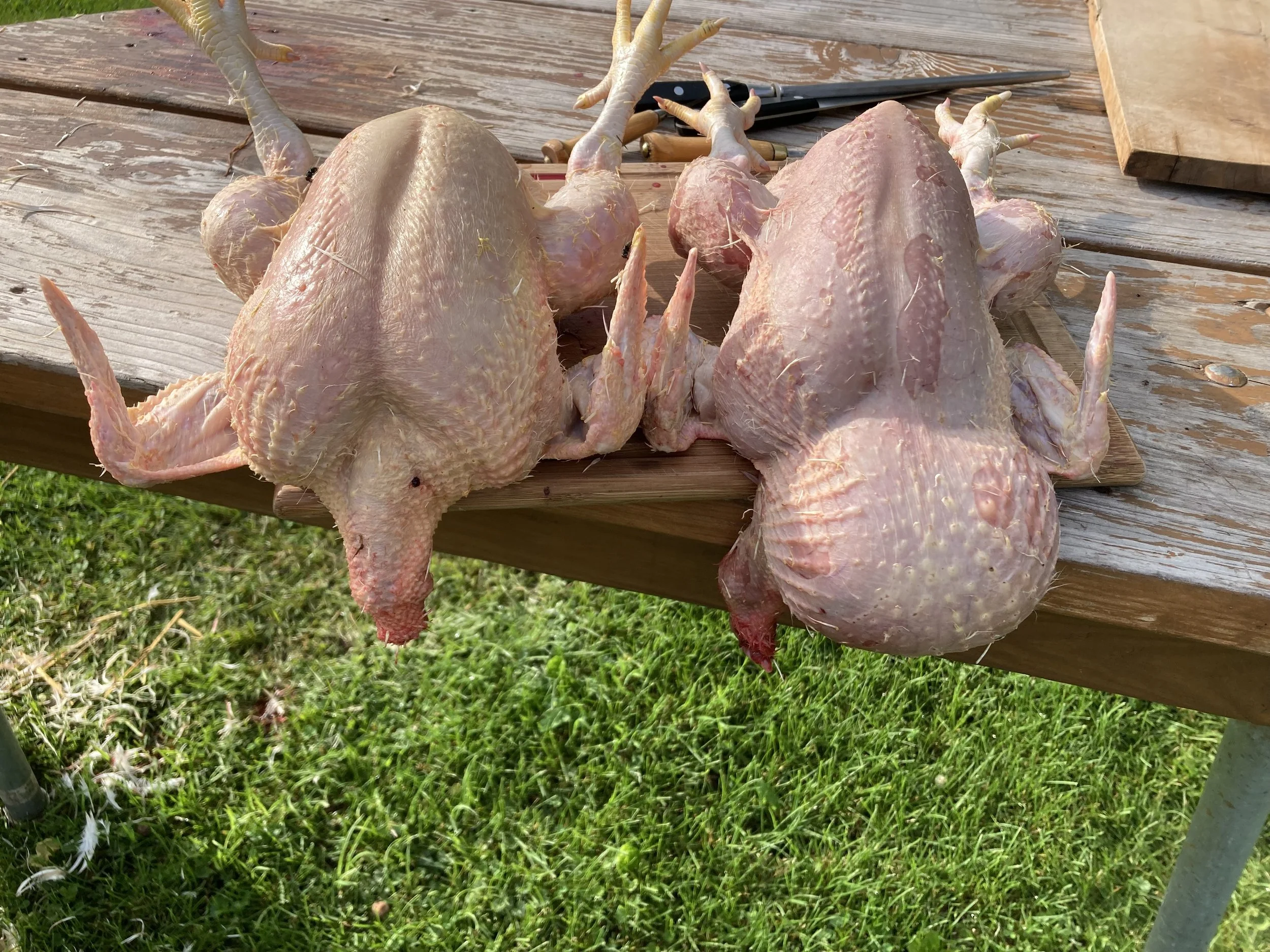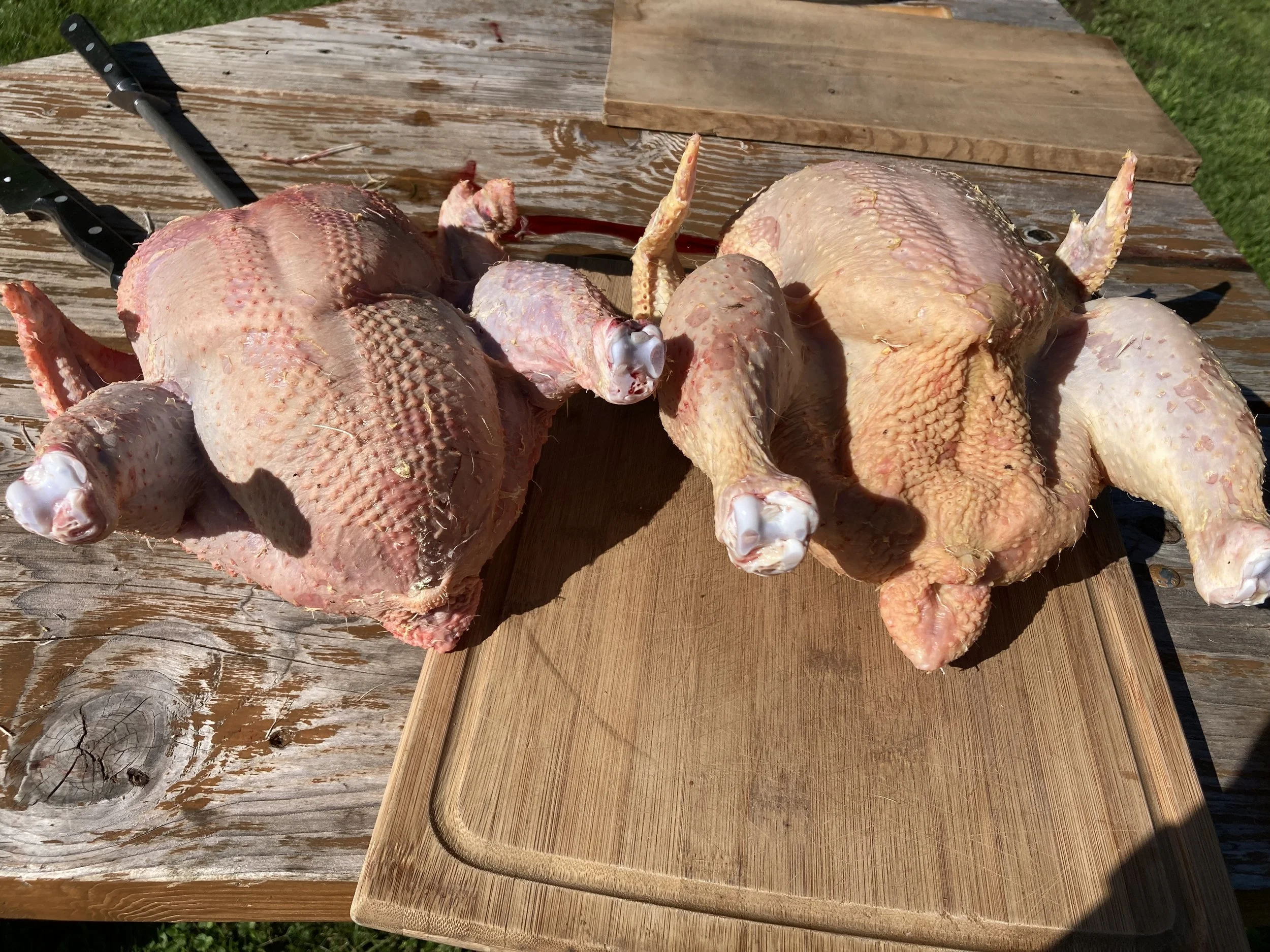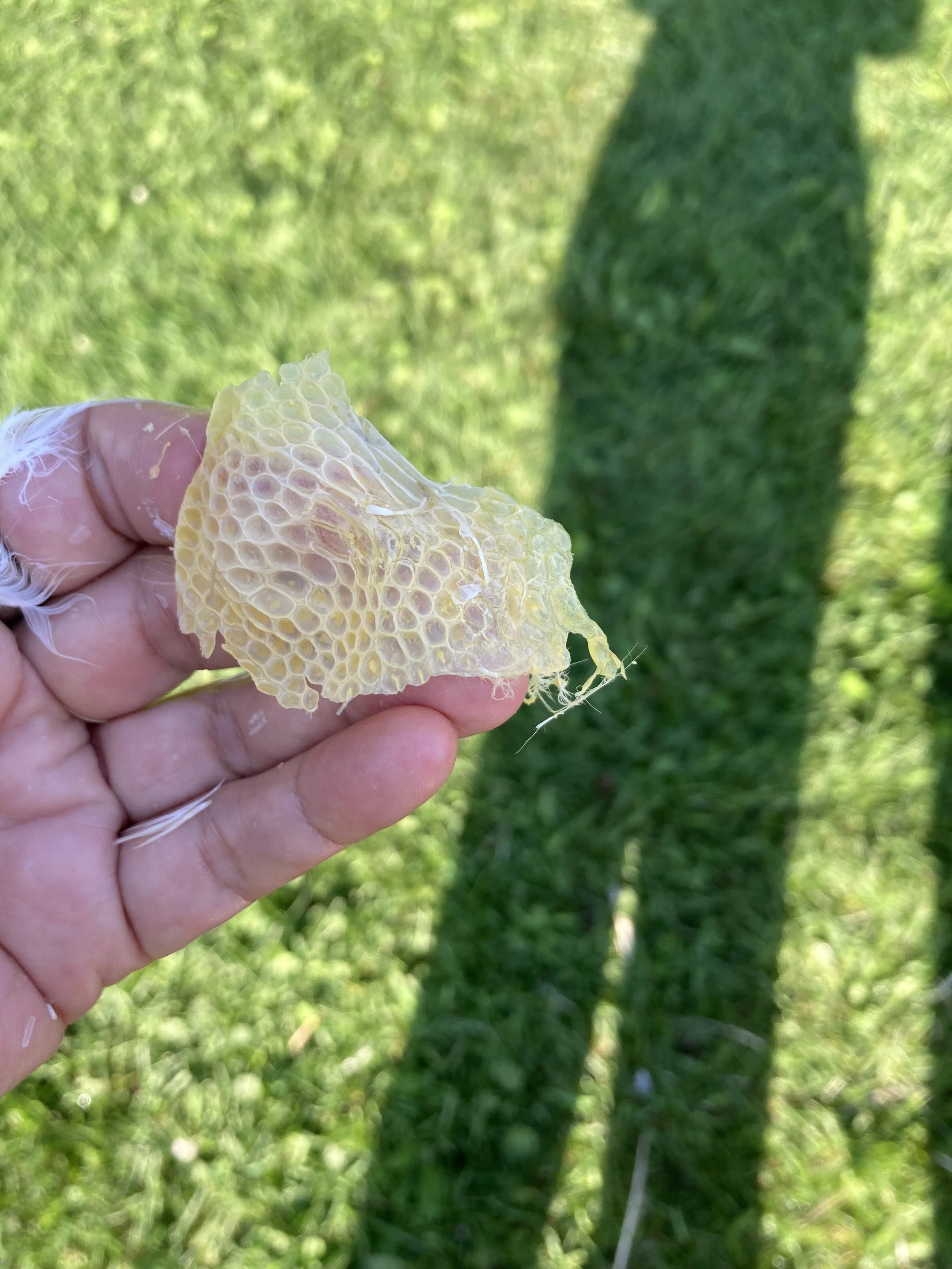Harvest journal: broilers by the numbers
Broilers are unnatural birds, bred to produce meat in an efficient manner. They eat, drink water, poop, and grow. In nine weeks they can weigh nine pounds. They grow so quickly, they die from heart attacks or broken legs before they reach sexual maturity. A “heritage” chicken, if it is a large breed, might top out at 5 pounds after 20 weeks, at which point it is sexually mature. Broiler’s breeding and growth rates create certain problems, which is the topic of this post. For anyone who doesn’t wish to see photos of chickens being processed, stop reading here! I am providing some “buffer photos” to avoid any accidental viewing of anything resembling blood or a recently beheaded bird.
Down to the hard data. We bought 35 broiler cockerels (baby boy chicks), which arrived on May 6th. There were 36 in the box. The hatchery will sometimes add an extra in case a chick dies in transit. I’ve experienced this once in the eight years we’ve bought birds. The broiler chicks cost $2.50 each, for a total of $87.25.
They are so charming at this stage! But hungry. Unlike other chicks who aren’t immediately interested in eating (the nutrients in the yolk sac that sustained their growth in the shell usually lasts a day after hatching), these were furiously pecking at my fingers immediately.
We feed them “chick crumble”, which is a 22% protein feed, their entire life. We mix in some layer feed, which is 18% protein, when they are about a month old to keep their poop from becoming too runny, which tends to burn their butts. We probably sacrifice some growth, but they seem to do just dandy. We spent $122.85 total for crumble. We originally put the water jar in a cake pan so the chicks wouldn’t knock it over and thirst to death. It took two chicks drowning due to getting trapped between the rim of the cake pan and the waterer before we wised up and used a large plastic 5 gallon bucket lid to provide a stable, but non-lethal, platform for the water.
At three weeks old, we needed to use a larger feeder. We eventually graduated to two feeders to keep up with demand. We only feed during the daytime, and mostly outdoors. This helps keep their sleeping area freer from poop as well as discouraging the mice and rats. I would bring in the feeder at night to lure them into the coop. My heritage chickens made me chase them twice before learning to go into the coop on their own. The broilers went into the coop voluntarily on the last night before there were no more.
At one month old we began to lose broilers to unknown causes. We lost a total of 9: two to drowning and the rest to what I suspect was malformation of their digestive tracts. We might lose 2-3 in any one year due to getting trampled or cold or some other accident. This year we lost a lot of chicks. If it were the bird flu, we would have lost more. For comparison, we haven’t lost any of the 18 heritage chickens we incubated from our own eggs.
We began harvesting the broilers at about 5 weeks, and this one weighed in at 5 pounds, which is pretty normal.
But then there was one who weighed only 2.5 pounds, and as you can see, does not look normal. This guy’s crop was full to bursting with feed, but he was starving. When I examined his entrails, the section of gut between the crop and gizzards was hard, swollen, and almost entirely closed off. By the way, chickens have a “crop”, or sac, which is where the neck meets the breast. They store food there until it can make its way through the gizzard, which is full of grit that acts like teeth. From there, food goes through the intestines.
We started taking the ones that were visibly smaller than the others and found they, also, were suffering from gastric abnormalities. The one on the left was full of liquid. I sometimes find this condition when harvesting older hens whose innards are beginning to break down. Finding this condition in young birds probably explains the increased mortality of the chicks. We have noticed that cohorts will share certain problems, such as splayed legs, from year to year. We think this happens because the semen of a limited number of roosters are used to create the hybrid that is the broiler.
Even if they are short-lived birds, we try to give them the chance to be a chicken.
And then we kill them and eat them because that is part of raising broilers.
Seeing how leg skin looks like snake skin is something not everyone gets to do. Not everyone would want to. Personally, I like knowing my food on a very personal level. Many like to have their food processed so that it no longer bears any resemblance to an animal. Think chicken nuggets shaped like dinosaurs.
We ended up with 168 pounds of chicken bits. Most of that went to our children, whose freezers are now full. It cost us about $1.25 a pound to purchase the chicks and feed them until harvest. That does not include infrastructure, utilities, and equipment. It does not include labor. It does not include the pleasure of eating a chicken that tastes better than anything you can buy at Walmart, or even Whole Foods. Here’s to being an omnivore and eating dinosaurs that look like dinosaurs!

